The freedom to hit the open road, traverse rugged trails, or conquer picturesque paths becomes a reality when you have a bike rack designed specifically for your Jeep or SUV.
A custom bike rack not only offers convenience but also opens up a world of possibilities for outdoor enthusiasts and avid cyclists alike. No longer limited by the constraints of local trails, you can now venture far and wide, taking your bikes along for the ride.
In this article, you’ll learn how to assess your vehicle, explore different bike rack options, gather the necessary materials, and construct your own bike rack with detailed instructions. So, get ready to unlock a new level of adventure as we empower you to make a bike rack that perfectly fits your vehicle and accommodates your biking needs.
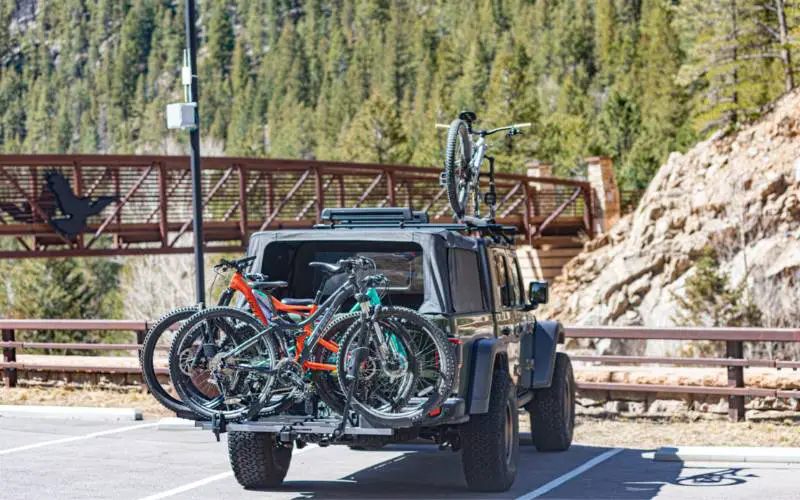
Assessing Your Vehicle and Bike Rack Options
When it comes to making a bike rack for your Jeep or SUV, it’s crucial to begin by assessing your vehicle and exploring the various bike rack options available. Understanding the compatibility between your vehicle and different types of bike racks will help you make an informed decision and ensure a successful and secure setup.
There are several types of bike racks that are well-suited for Jeeps and SUVs. Let’s take a closer look at each one:
Hitch-Mounted Racks
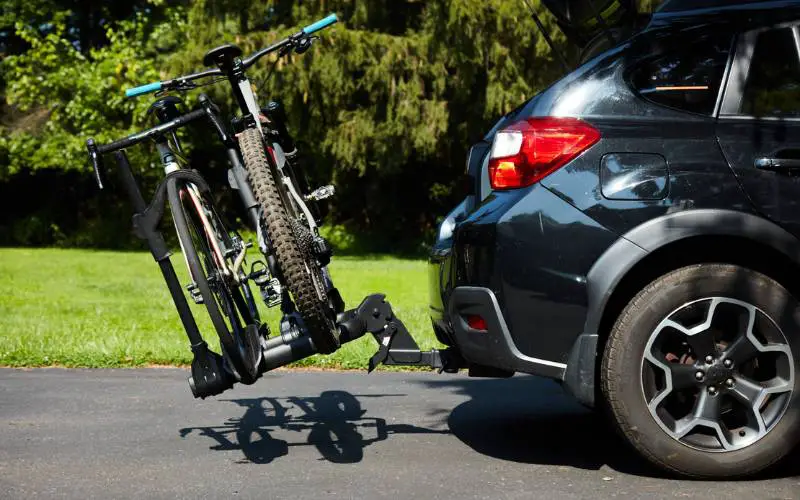
These racks attach to the hitch receiver of your vehicle, providing a sturdy and convenient option. They come in different designs, including platform-style and hanging-style racks. Hitch-mounted racks offer easy loading and unloading, as well as the ability to carry multiple bikes.
Roof-Mounted Racks
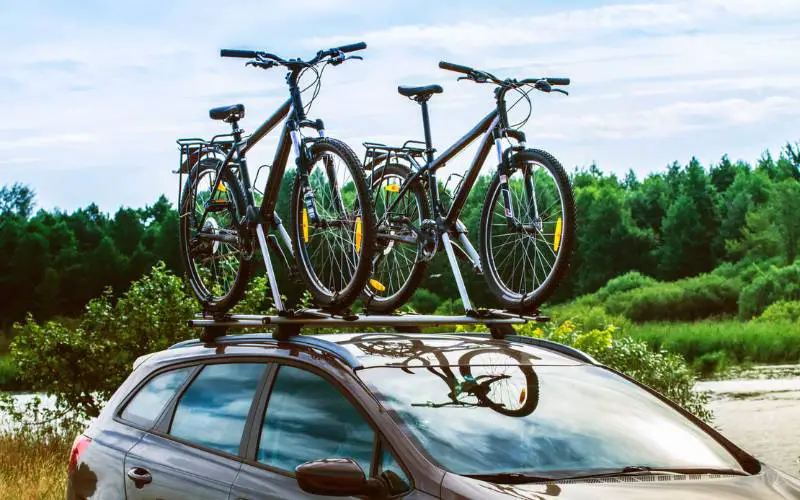
Roof racks are mounted on the top of your vehicle, allowing you to transport your bikes vertically. They are versatile and can accommodate various bike sizes and styles. However, loading and unloading bikes on a roof-mounted rack can be more challenging and require additional lifting.
Spare Tire-Mounted Racks
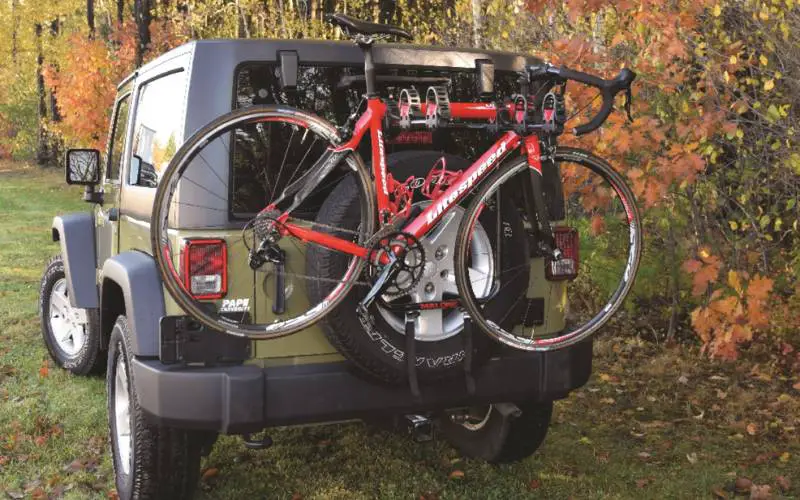
Specifically designed for Jeeps with a rear spare tire, these racks utilize the spare tire as a mounting point. They are easy to install and don’t require a hitch or roof rails. However, spare tire-mounted racks may have limitations in terms of bike capacity and vehicle compatibility.
Factors to Consider When Choosing a Bike Rack
When selecting a bike rack for your Jeep or SUV, there are several factors to consider:
Bike Capacity: Determine how many bikes you plan to transport regularly. Different racks have varying capacities, ranging from accommodating one bike to multiple bikes.
Security Features: Assess the security features provided by the bike rack, such as locks or anti-theft mechanisms. These features help protect your bikes during transit and deter potential theft.
Advantages and Disadvantages of Each Type of Bike Rack
| Rack Name | Advantages | Disadvantages |
| Hitch-Mounted | Easy loading and unloading Suitable for heavy bikes Provides access to the rear of the vehicle | Requires a hitch receiver Adds length to the vehicle May obstruct rearview |
| Roof-Mounted | Versatile Doesn’t obstruct rearview Allows access to the trunk or rear hatch | Requires additional lifting May impact vehicle height and aerodynamics Can be challenging for taller vehicles. |
| Spare Tire-Mounted | Easy installation Doesn’t require a hitch or roof rails Maintains rear visibility | Limited bike capacity May block rear license plate May limit access to the rear of the vehicle. |
Considering these factors and understanding the pros and cons of each type of bike rack will help you make an informed decision based on your specific needs and vehicle requirements. By carefully assessing your options, you can choose the bike rack that best suits your Jeep or SUV, providing a safe and reliable means to transport your bikes on your next adventure.
Planning and Gathering Materials
To successfully create a custom bike rack for your Jeep or SUV, proper planning and gathering the necessary materials are essential. This stage ensures that you have everything you need before diving into the construction process.
Research and Select a Suitable Bike Rack Design
Before proceeding, research different bike rack designs and select the one that aligns with your needs and vehicle specifications. Consider factors such as the type of bike rack (hitch-mounted, roof-mounted, spare tire-mounted), the number of bikes it can accommodate, and any additional features you require. Take into account your vehicle’s dimensions, weight capacity, and any specific constraints it may have.
Comprehensive List of Materials and Tools
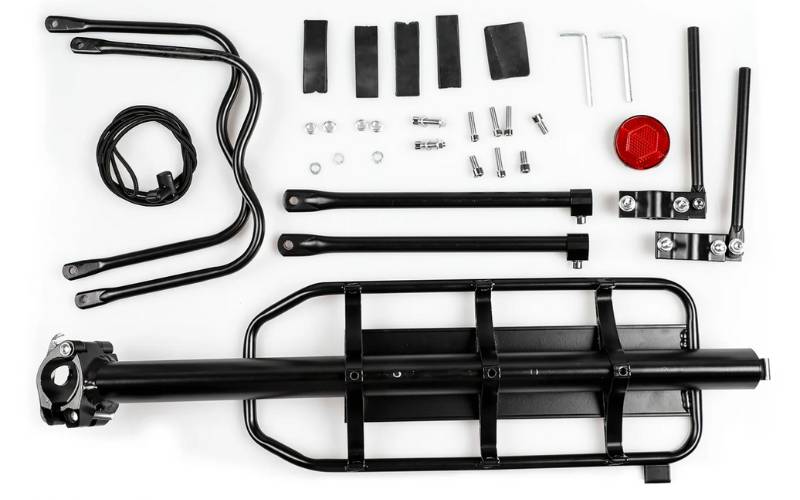
Once you have chosen a bike rack design, compile a comprehensive list of materials and tools required for the project. This list typically includes items such as:
Metal or PVC pipes: Used for the frame structure of the bike rack.
Fasteners (bolts, nuts, washers): Needed to secure the components together.
Padding or rubber strips: Provide protection for the bikes and prevent scratches.
Straps or bungee cords: Essential for securing the bikes to the rack during transportation.
Tools: Depending on the design and materials, you may need a saw, drill, wrench, tape measure, and other basic hand tools.
Ensure that you have all the necessary materials and tools readily available before starting the construction process. This will streamline the process and prevent unnecessary delays.
Tips for Sourcing Materials and Where to Find Them
Sourcing the materials for your bike rack project can be done through various channels. Consider the following tips to find the materials you need:
Local Hardware Stores
Visit your nearest hardware store, as they often carry a wide range of materials and tools required for DIY projects. Consult the store staff for assistance and recommendations based on your specific requirements.
Online Retailers
Explore online marketplaces and specialized websites that offer a variety of materials for DIY projects. These platforms provide convenience and often have a wider selection of materials to choose from.
Salvage Yards or Recycling Center
Consider visiting salvage yards or recycling center, as they may have used or repurposable materials that can be suitable for your bike rack project. This option can be cost-effective and environmentally friendly.
Remember to compare prices, quality, and availability of materials across different sources to make informed decisions. By planning ahead and diligently gathering the required materials and tools, you’ll be well-prepared to start constructing your custom bike rack for your Jeep or SUV.
Step-by-Step Construction Process
Step 1: Preparing the Vehicle

Start by cleaning the surface of your vehicle where the bike rack will be mounted. Ensure it is free from any dirt, dust, or debris. This will promote a secure and stable attachment.
Identify the optimal mounting locations for the bike rack. Depending on the type of bike rack and your vehicle’s specifications, common mounting points include hitch receivers, roof rails, or spare tire holders. Refer to the manufacturer’s instructions or consult a professional if necessary.
Step 2: Measuring and Cutting
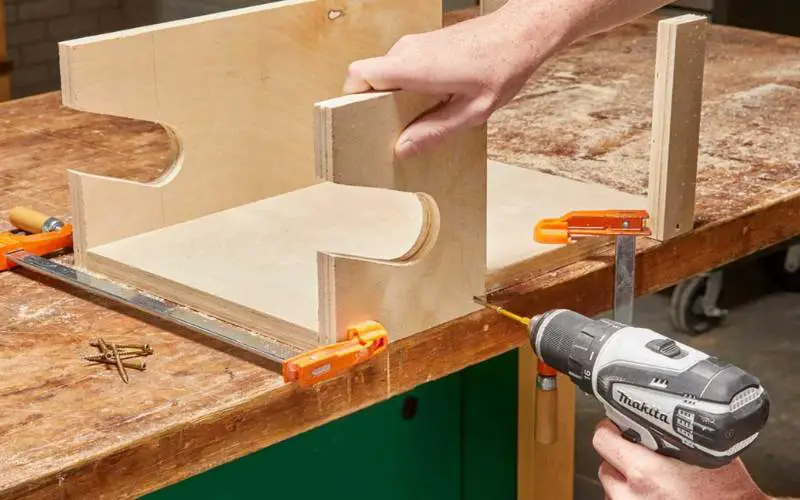
Measure and mark the dimensions for the bike rack components based on your chosen design. This includes the length, width, and height of the frame, as well as any supporting bars or attachments.
Use appropriate tools, such as a saw or pipe cutter, to cut the materials according to your measurements. Ensure clean and precise cuts to facilitate proper assembly and structural integrity.
Step 3: Assembly and Installation
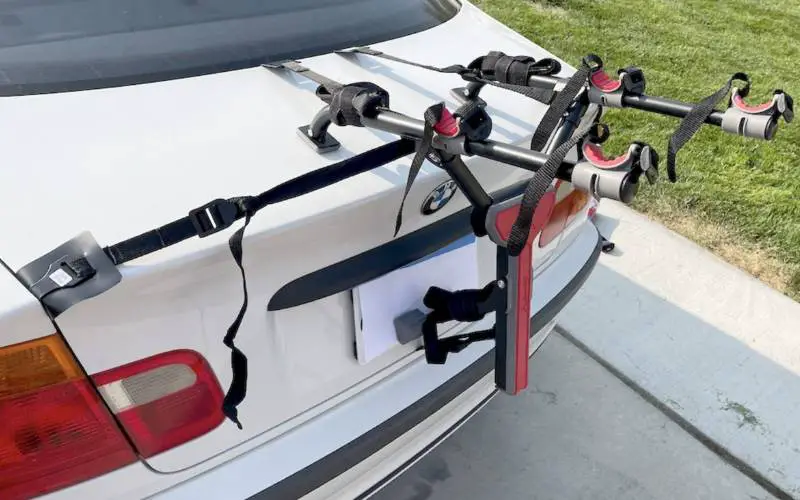
Follow the detailed instructions provided by your chosen bike rack design to assemble the various components. This may involve connecting pipes or bars, attaching brackets or supports, and securing fasteners.
Once the bike rack is fully assembled, proceed with the installation onto your vehicle. Carefully follow the installation instructions specific to your chosen bike rack type. This may involve sliding the rack into the hitch receiver, attaching it to roof rails, or securing it onto the spare tire holder.
During the installation process, pay attention to any additional modifications or adjustments required for a secure fit. This may include tightening bolts or adjusting the angle or position of the bike rack to ensure stability and clearance.
Step 4: Enhancements and Safety Measures
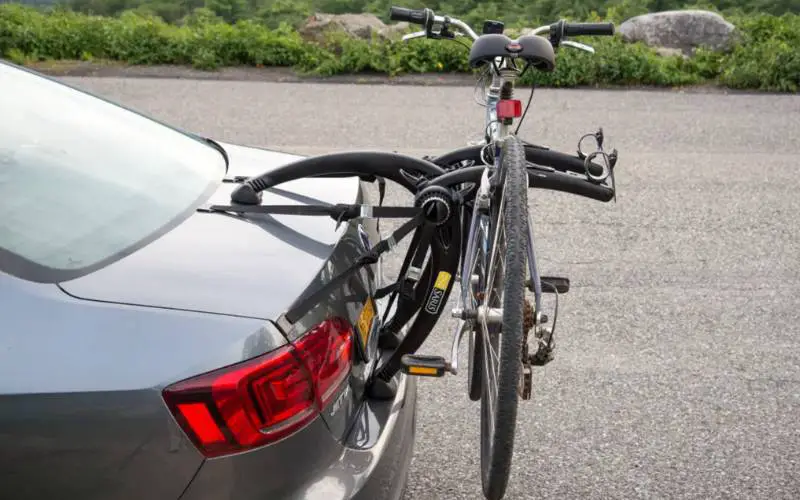
Consider adding additional features to enhance bike security and vehicle protection. This can include applying padding or rubber strips to the contact points between the rack and the bikes to prevent scratches or damage. Explore options for straps or bungee cords to secure the bikes firmly in place during transportation.
Emphasize the importance of ensuring the bike rack is stable and safe for transportation. Double-check all connections, fasteners, and adjustments to minimize the risk of any unwanted movement or detachment while on the road. Regularly inspect and maintain the bike rack to ensure it remains in good condition.
By following these step-by-step instructions, you’ll be able to construct and install a functional bike rack for your Jeep or SUV. Remember to refer to the specific instructions provided by your chosen design and seek professional assistance if needed. Enjoy the convenience and freedom of taking your bikes on exciting adventures with your newly created bike rack.
Frequently Asked Questions
Are there any roof-mounted bike racks suitable for tall vehicles?
Yes, there are roof-mounted bike racks available that are suitable for tall vehicles. Many manufacturers offer adjustable roof-mounted bike racks that can accommodate different vehicle heights. These racks have adjustable mounting brackets or extendable arms, allowing for a higher clearance and compatibility with taller vehicles like SUVs or trucks.
Some models also allow for raising the height or adjusting the distance between the rack and the roof to accommodate taller bikes or provide more clearance for the vehicle roof. When considering a roof-mounted bike rack for a tall vehicle, check the specifications and product details provided by the manufacturer.
Look for features like adjustable height or extension capabilities to ensure a proper fit and secure attachment. It’s also helpful to read customer reviews and seek recommendations from fellow tall vehicle owners. Follow the manufacturer’s installation instructions and weight limits for safe transportation of your bikes on the roof of your tall vehicle.
Can you use a spare tire-mounted bike rack on my Jeep Grand Cherokee?
Yes, you can use a spare tire-mounted bike rack on your Jeep Grand Cherokee. Spare tire-mounted bike racks are specifically designed to attach to the spare tire of vehicles, making them a convenient option for SUVs like the Jeep Grand Cherokee that have a rear-mounted spare tire.
These bike racks typically feature a mounting plate or bracket that securely attaches to the spare tire. They are designed to accommodate multiple bikes and provide a stable and secure transport solution.
Are there any bike racks with built-in locks for added security?
Many manufacturers offer bike racks that incorporate locking mechanisms to provide an additional layer of protection against theft. These bike racks typically feature integrated locks that secure the bikes to the rack itself, preventing unauthorized removal. The locks are often located at the attachment points where the bikes are held, such as the frame or wheel mounts.
The built-in locks are designed to deter opportunistic theft and provide peace of mind when leaving your bikes unattended. They offer convenience by eliminating the need for separate locks or cables.
Final Word
Congratulations! You have successfully learned how to create a custom bike rack for your Jeep or SUV. By following the step-by-step instructions and considering important factors such as vehicle compatibility, bike capacity, and security features, you can now embark on thrilling biking adventures with ease. Having a bike rack tailored to your vehicle not only offers convenience but also opens up a world of possibilities.
